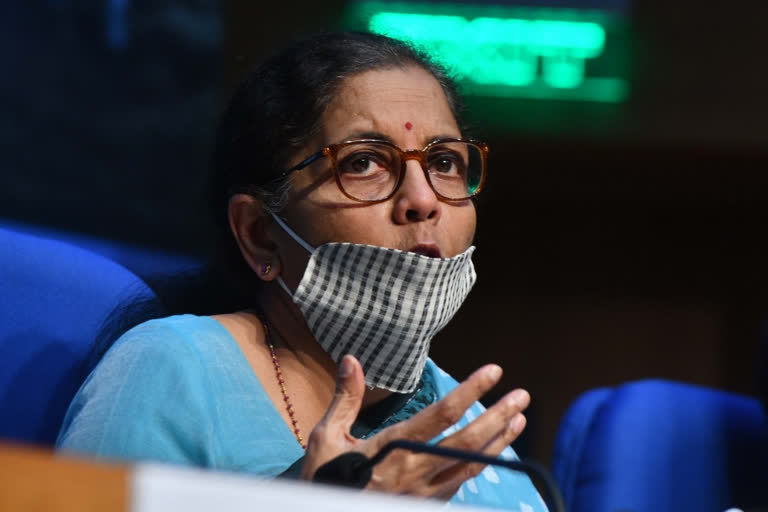Hyderabad: India today is undergoing an unprecedented health emergency due to COVID-19, impacting the lives and livelihoods of its billion plus population. Like any other country, India too resorted to an inevitable lockdown to prevent the spread of the disease, in the absence of a vaccine to treat it.
After bringing the country to a grinding halt for 54 days and counting, it could slow down the doubling time of number of Corona positive cases, relative to the rest of the world, including some of the industrialized nations.
However, it came at a huge economic cost that the country had to pay in terms of lost output, employment and incomes. The United Nations projected that Indian economy would grow at 1.2 percent in 2020, while it grew at a rate of 4.3 percent and 6.8 percent during 2019 and 2018 respectively.
On the other hand the estimates of the Centre for Monitoring the Indian Economy (CMIE) suggests that 114 million jobs were lost in April 2020 and what is more worrisome is the fact that 27 million of these jobs were lost by the youth falling in the age group of 20-30 years.
“The Package”: Some Concerns
Given the economic suffering that the country is undergoing, the ruling dispensation had come out with a massive package of Rs.20 lakh crore. It was basically a combination of measures assuring liquidity by making enough cash available in the banking system and providing government guarantees to the loans that banks provide to a variety of stakeholders from MSMEs to street hawkers.
On the other hand key reforms related to agriculture, industry and ease of doing business are brought forward besides focusing upon the much needed agricultural infrastructure. Last but not the least gates are widened for the entry of private sector in PSUs too.
All the policy measures that the Finance Minister announced in her series of press conferences are to be welcomed as they have the potential to make India self-reliant to a large extent in the medium and long run. In fact these reform and liquidity measures, if implemented in letter and spirit, could address some of the fault lines that had slowed India’s economic growth, even before the country came under the influence of COVID-19.
Read more: Why Modi’s new coal mining policy can’t succeed without States, explains Anil Swarup
However the main concern at this point is that, despite a huge package, there is still a larger scope left to address the more pressing problem of the day, i.e, the revival of aggregate demand in the economy.
The basic reason for a dip in economic growth and a spike in unemployment numbers is the lack of demand for goods and services in the economy.
Although there are issues of disruption in supply chain networks and other issues related to supply, they are secondary. Hence the pressing concern at this juncture is to take policy initiatives that boosts consumption.
However the lockdown caused the erosion of incomes due to loss of jobs. Expecting the consumption expenditure without a fiscal stimulus form the State may not be a viable proposition. On the other hand the businesses, ranging from retail to corporates, have fixed costs irrespective their current financial condition.
This puts further stress on them to revive their businesses. The package largely focuses on offering loans, rather than providing them direct support in terms of subsidies on some of their fixed costs.
It is to be noted in this context that businesses normally goes for a loan if they have enough confidence that it would flourish and its expected returns should be at least equal or higher than the interest paid on the loan, in a worst case.
At a time when the consumption of goods and services touched the rock bottom, how much of the loans being offered through this package depends upon how quickly the consumption demand improves in the economy. This eventually boils down to the point of taking measures to improve the demand.
The Way Ahead:
In order to revive the consumption demand, one policy proposition at hand is to go for a fiscal stimulus.
There is a need to improve the public expenditure that provides work for the unemployed on one hand and providing input subsidies to farmers, fiscal incentives and meeting out a part of the fixed cost requirements of the small retail businesses and MSMEs on the other hand.
Parallelly there is a need to further increase the cash transfers to the poor and vulnerable as they spend maximum share of their incomes to meet their daily needs and it improves consumer demand.
On the other hand the Agriculture and MSMEs, jointly contribute to nearly 80 percent of the work force and a revival of these sectors with the fiscal stimulus measures will improve the employment prospects.
This in turn provides incomes and then gives a boost to the consumption. Thus the task at hand is to help these segments with fiscal measures, to help the economy to revive. The problem of fiscal deficit will surely arise. But it may not be bigger than the question of lives and livelihoods of majority Indians.
(Written by Dr. Mahendra Babu Kuruva. The Author is an Assistant Professor, H.N.B. Garhwal Central University, Uttarakhand. Views expressed above are his own.)



